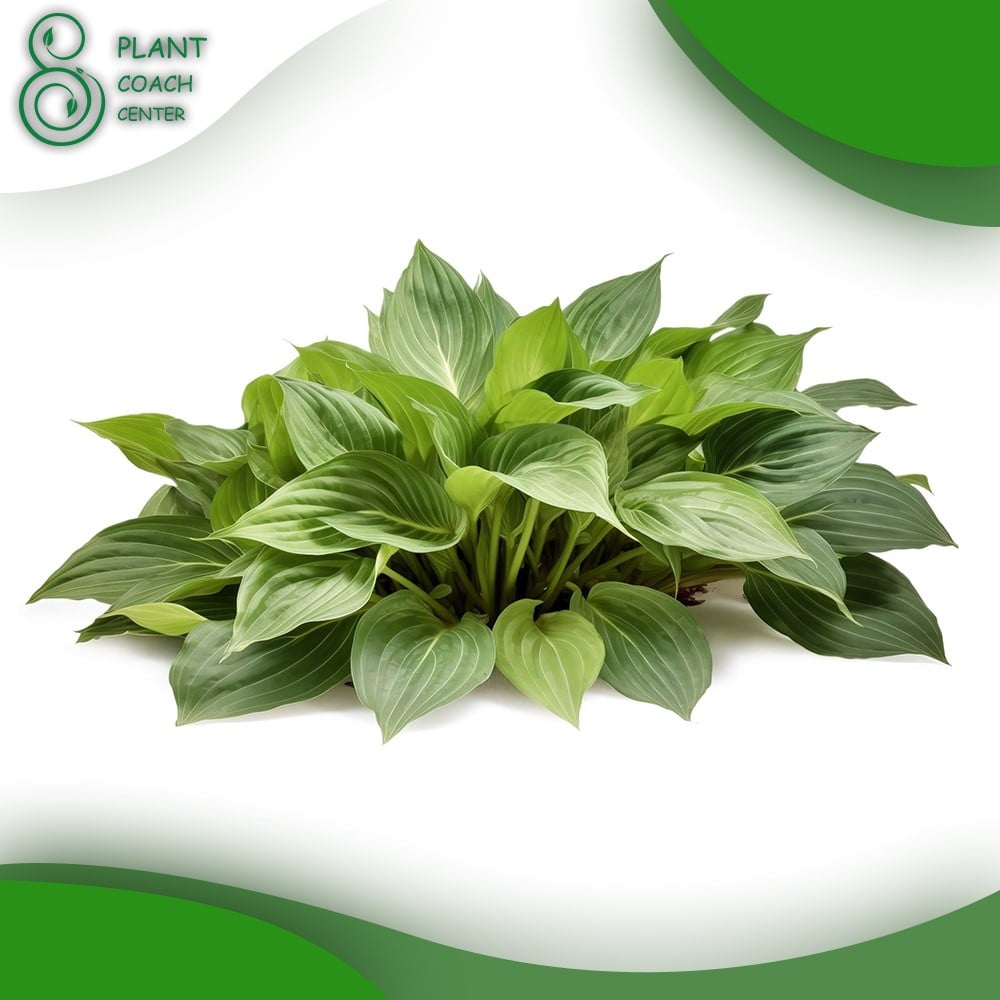When to Cut Back Hostas
Hostas are beloved perennial plants known for their lush foliage and ability to thrive in shady areas. With their wide variety of sizes, shapes, and colors, hostas add beauty and texture to gardens and landscapes. To ensure their long-term health and vitality, it is crucial to provide proper care and maintenance, including timely pruning. This comprehensive guide will explore the best practices for cutting back hostas, considering different factors and considerations.
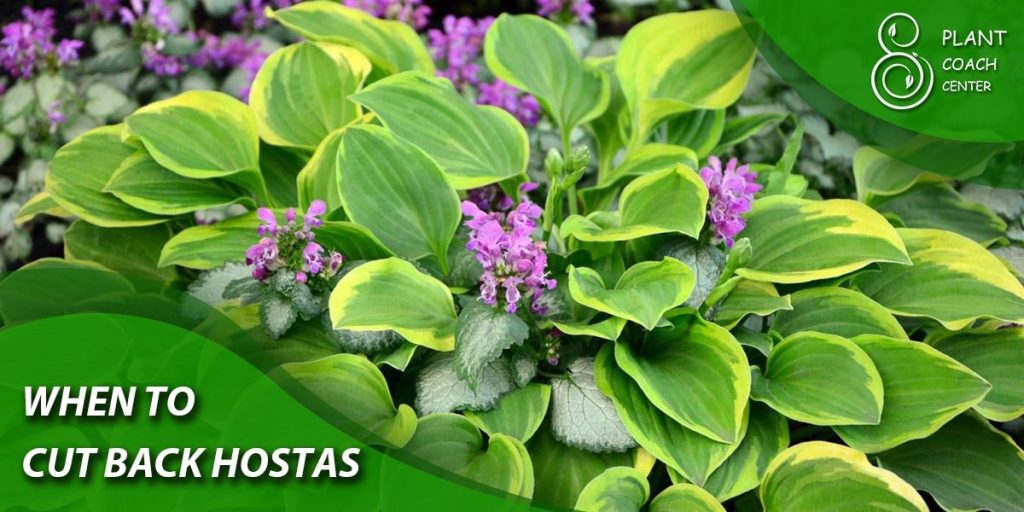
Understanding Hosta Growth Cycle
To determine the ideal timing for pruning hostas, it is essential to understand their growth cycle. Hostas go through distinct stages of growth throughout the year, from the emergence of new shoots in early spring to dormancy and leaf senescence in late fall. Recognizing these stages lets you decide when to trim and cut back your hostas.
The growth cycle of hostas typically involves four key stages:
- Emergence of New Shoots: As the winter frost recedes and temperatures rise, hostas emerge from their dormant state. The first signs of new growth include tiny shoots pushing through the soil. At this stage, avoiding pruning or cutting back the emerging shoots is crucial, as they require time to develop fully.
- Leaf Development and Expansion: As the shoots grow, they unfurl into beautiful, vibrant leaves. In this stage, hostas showcase their signature foliage, ranging from broad and heart-shaped to narrow and lance-shaped. During this phase, hostas accumulate energy through photosynthesis, contributing to their overall health and vigor.
- Flowering and Seed Production: Depending on the hosta variety, some plants produce tall flower stems that bear clusters of delicate, often fragrant, flowers. Flowering generally occurs in mid-to-late summer. While the flowers add an extra dimension of beauty to the hosta, they also impact the overall energy reserves of the plant. Therefore, trimming flower stems is an important consideration when pruning hostas.
- Dormancy and Leaf Senescence: Towards the end of the growing season, hostas enter a period of dormancy. As temperatures drop and daylight hours decrease, the leaves gradually fade in color and decline. This natural process, known as leaf senescence, indicates that the hosta prepares for winter. Pruning during this stage helps remove spent foliage and promotes a clean and tidy appearance.
Signs that Hostas Require Pruning
Like any other plant, Hostas may exhibit signs indicating the need for pruning. By recognizing these signs, you can proactively address issues and maintain your hostas’ overall health and appearance. Here are some common signs that indicate it’s time to cut back your hostas:
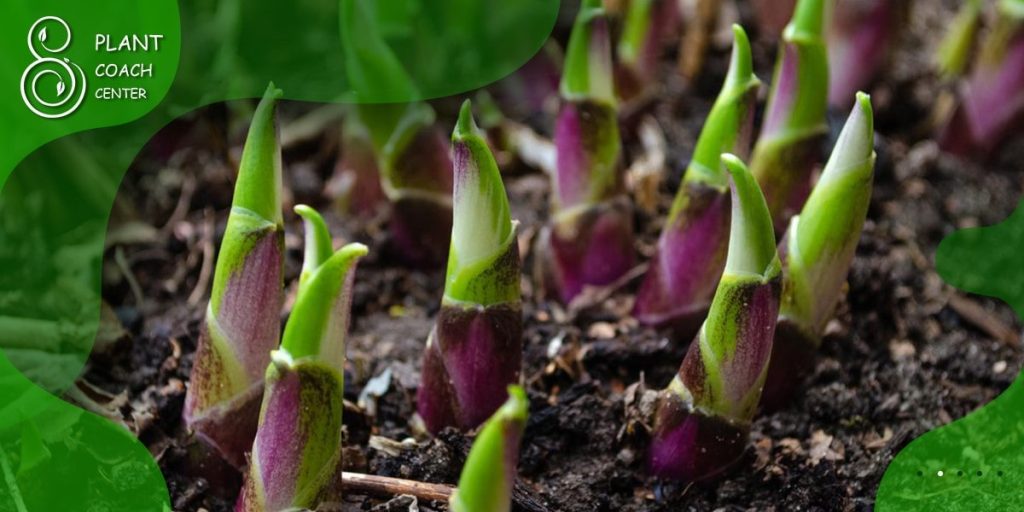
- Overgrown Foliage: Hostas are known for their lush foliage, but when the leaves become crowded and start overlapping excessively, it can impact the plant’s health. Overgrown foliage restricts air circulation and sunlight penetration, creating an environment conducive to disease and pest infestations. Pruning helps thin out the foliage and restore a balanced growth habit.
- Faded or Yellowing Leaves: As the hosta’s leaves age, they may fade or turn yellow. This can be a natural part of the leaf senescence process. However, if many leaves show signs of discoloration, it could indicate an underlying issue such as nutrient deficiencies, disease, or inadequate sunlight. Pruning away the discolored leaves can improve the plant’s overall appearance and promote healthy new growth.
- Pest or Disease Infestations: Hostas are susceptible to various pests, including slugs, snails, aphids, and caterpillars. These pests can cause significant damage to the foliage, leading to unsightly holes or chewed edges. Additionally, hostas can be affected by fungal diseases like powdery mildew or crown rot. Pruning affected leaves and removing any pest-infested or diseased foliage can help prevent the spread of pests and diseases to the rest of the plant.
- Crowding and Lack of Air Circulation: Hostas are clump-forming plants that gradually expand over time. If not divided regularly, clumps can become crowded, resulting in poor air circulation and an increased risk of diseases. Pruning the outer or older leaves of crowded hostas helps create space within the clump, allowing better airflow and reducing the chances of fungal infections.
Factors to Consider Before Pruning Hostas
Before you grab your pruners and start cutting back your hostas, several factors should be considered to ensure the best outcome for your plants. Here are some essential factors to keep in mind:
1. Timing Based on Climate
The timing of pruning hostas can vary depending on your climate and the specific needs of the hosta variety. In general, spring and fall are the most suitable seasons for pruning. However, suppose you live in a region with mild winters or extended growing seasons. In that case, you may need to adjust the timing accordingly.
- Spring Pruning: Pruning in early spring, just as new shoots are emerging, allows you to remove any damaged or unsightly foliage from the previous year while providing a clean start for the current growing season.
- Fall Pruning: Pruning in late fall, after the hosta has entered dormancy and the leaves have faded, helps tidy up the plant for winter. Removing spent foliage prevents debris buildup, which can attract pests and diseases.
- Pruning in Mild Climates: In regions with mild climates, where hostas may remain evergreen or exhibit year-round growth, you may need to adapt your pruning schedule accordingly. Monitor the growth and appearance of your hostas and make pruning decisions based on their specific needs.
2. Health and Vigor of the Plant
Your hostas’ overall health and vigor play a crucial role in determining the extent and timing of pruning. They may require minimal pruning if your hostas are robust, exhibiting vigorous growth, and no signs of pests or diseases. Conversely, if your hostas struggle or show signs of stress, more aggressive pruning may be necessary to rejuvenate the plant.
3. Impact on Flowering and Seed Production
The decision to prune hostas’ flower stems depends on your aesthetic preference and the impact on the plant’s energy reserves. You may leave the flower stems intact if you prioritize flowering and seed production. However, removing the flower can redirect the plant’s energy toward leaf production if aesthetics and foliage health are the primary focus.
4. Personal Aesthetic Preferences
Pruning hostas can be influenced by personal preferences and the desired appearance of your garden or landscape. Some gardeners prefer a more natural, untrimmed look, allowing the hostas to grow freely. Others prefer a neater, more manicured look and opt for regular pruning. Consider your aesthetic goals and choose pruning methods that align with your vision.
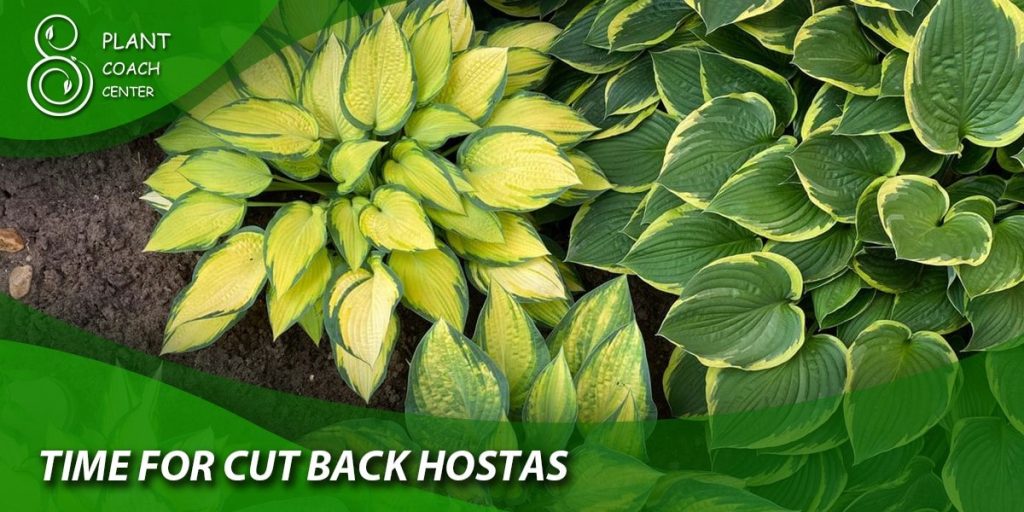
Techniques and Best Practices for Cutting Back Hostas
Once you’ve determined the appropriate timing and factors to consider for pruning your hostas, it’s important to understand the techniques and best practices involved. Proper pruning methods ensure minimal stress on the plants and promote healthy growth. Here are some techniques and best practices to follow when cutting back hostas:
1. Tools and Equipment Needed
Gather the necessary tools and equipment before you begin pruning. Some essential items include clean and sharp pruning shears or scissors, gardening gloves to protect your hands, and a clean cloth or towel for wiping the blades. Using clean and sharp tools helps prevent the spread of diseases and ensures precise cuts.
2. Preparing the Hostas for Pruning
Before pruning, take a moment to prepare the hostas by gently cleaning the foliage. Remove any debris, dirt, or dead leaves covering the plant. This step gives you a clearer view of the hosta’s structure and ensures a more efficient pruning process.
3. Pruning Methods
Removing Entire Leaves: To remove entire leaves, carefully identify the leaf stem where it attaches to the plant’s crown. Position your pruning shears or scissors just above the crown and make a clean, angled cut. Removing older or damaged leaves helps improve air circulation and prevents the spread of diseases.
Trimming Leaf Tips: If you prefer a neater appearance or the leaf tips are damaged or unsightly, you can trim them. Hold the leaf firmly but gently between your fingers and snip off the desired portion of the leaf tip. Aim for a clean and straight cut to maintain a natural look.
Cutting Back Flower Stems: If you remove the flower stems, locate the stem where it emerges from the plant. Using sharp pruning shears, make a clean cut at the base of the stem. Cutting back spent flower stems redirects the plant’s energy towards foliage growth and can enhance the overall appearance of the hosta.
4. Dealing with Diseased or Pest-Infested Foliage
If you come across foliage that shows signs of diseases or pest infestations, it’s important to address them promptly. Prune affected leaves, making sure to dispose of them properly. Avoid composting diseased or pest-infested foliage, as it can perpetuate the problem.
5. Post-Pruning Care and Maintenance
After pruning, provide appropriate care and maintenance to support the hostas’ recovery and promote healthy growth. Ensure the plants receive adequate water, especially during dry periods. Applying a layer of organic mulch around the base of the plants helps conserve moisture and suppress weed growth. Monitor the hostas closely for signs of stress or additional pruning needs as they grow.
Following these techniques and best practices can effectively prune your hostas and contribute to their long-term health and visual appeal.
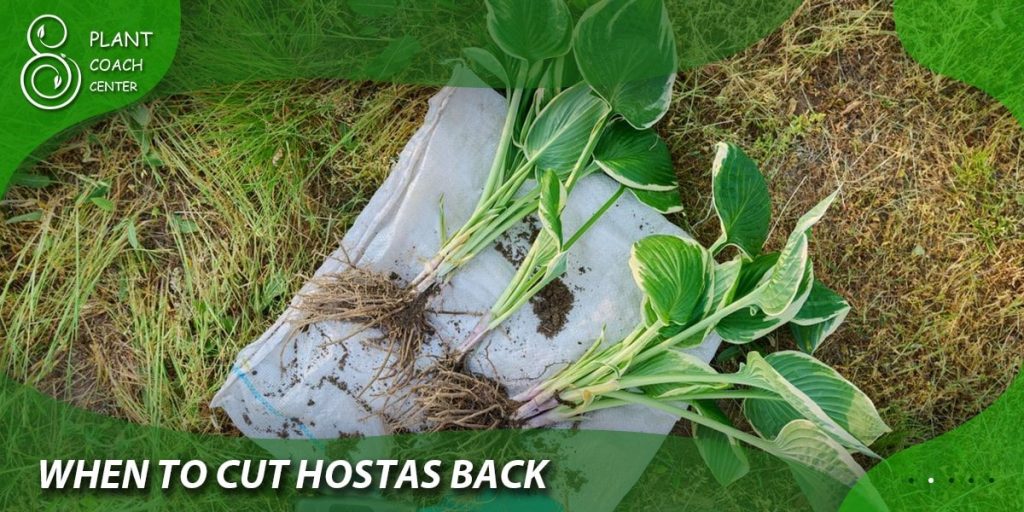
Special Considerations for Different Hosta Varieties
While the general principles of pruning apply to all hosta varieties, it’s important to consider the specific characteristics of different types when determining the ideal pruning approach. Here are some special considerations for pruning different hosta varieties:
- Miniature Hostas: Miniature hostas are characterized by their small size and delicate appearance. When pruning these hostas, exercise caution to avoid removing too much foliage, as it can impact their overall aesthetic. Focus on removing spent flower stems and any damaged or yellowing leaves, allowing the compact habit of miniature hostas to shine.
- Giant Hostas: Giant hostas, as the name suggests, are known for their large size and robust foliage. Pruning giant hostas may involve more significant foliage removal, particularly if they have become overgrown. Gradually thin out the outer leaves, maintaining a balanced growth habit while ensuring proper air circulation.
- Variegated Hostas: Variegated hostas feature leaves with contrasting colors, often with white or yellow edges. Don’t remove too much of the variegation when pruning variegated hostas, as it contributes to their visual appeal. Trim any damaged or discolored leaves while preserving the distinct variegation patterns.
- Fragrant Hostas: Some hosta varieties are valued for their fragrant flowers. If you have fragrant hostas, consider the impact of pruning on their blooming potential. Removing spent flower stems after blooming can redirect the plant’s energy toward foliage growth. Still, if fragrance is a priority, you may choose to leave the flower stems intact.
Common Hosta Problems and Troubleshooting
While hostas are generally low-maintenance plants, they can encounter various problems and challenges. Understanding common hosta problems and how to troubleshoot them can help you maintain the health and vitality of your plants. Here are some common hosta problems and their potential solutions:
- Sunburn and Leaf Scorch: Hostas are shade-loving plants and can suffer from sunburn and leaf scorch when exposed to excessive sunlight. Symptoms include yellowing or browning of leaf edges or entire leaves. To prevent sunburn, ensure that hostas are planted in areas with partial to full shade. If your hostas are receiving too much direct sunlight, consider relocating them to a shadier spot or providing shade with the help of umbrellas or shade cloth.
- Slugs and Snails: Slugs and snails are notorious pests that can cause significant damage to hosta foliage. Their feeding results in irregular holes or chewed edges on the leaves. To control slugs and snails, employ various methods such as handpicking them off the plants, setting up physical barriers like copper tape or diatomaceous earth, and using organic slug baits. Regularly removing debris and mulch around hostas can also discourage slug populations.
- Crown Rot and Root Diseases: Crown rot and root diseases can affect hostas, particularly in poorly draining or waterlogged soil. Symptoms include yellowing or wilting leaves, stunted growth, and rotting at the base of the plant. To prevent these diseases, ensure that hostas are planted in well-draining soil and avoid overwatering. If you suspect crown rot or root diseases, remove affected plants promptly and improve soil drainage.
- Deer and Other Pests: Hostas are a favorite food source for deer, rabbits, and other browsing animals. Their feeding results in ragged or completely eaten leaves. Using physical barriers like fences or netting around hostas to deter these pests. You can also use repellents or companion plants that deer find unappealing. Regularly inspect the plants and take action if signs of browsing are detected.
- Nutrient Deficiencies: Hostas may exhibit nutrient deficiencies, leading to symptoms like yellowing leaves, stunted growth, or poor vigor. Common nutrient deficiencies include nitrogen, iron, and magnesium. Conduct a soil test to identify nutrient deficiencies accurately and amend the soil with appropriate fertilizers or organic matter. Regularly applying balanced fertilizers formulated for hostas can help prevent nutrient deficiencies.
By promptly addressing these common hosta problems and implementing suitable solutions, you can minimize the impact on your plants and help them thrive.
Final words
In conclusion, knowing when to cut back hostas is essential for maintaining their health, vigor, and aesthetic appeal. By understanding the hosta growth cycle, recognizing signs that indicate the need for pruning, and considering various factors such as climate, plant health, and personal preferences, you can make informed decisions about when and how to prune your hosta.
Following proper pruning techniques and best practices, such as using clean and sharp tools, preparing the hostas before pruning, and employing appropriate pruning methods, ensures minimal plant stress and promotes healthy growth. Additionally, addressing common hosta problems, such as sunburn, pest infestations, and nutrient deficiencies, can further contribute to the overall well-being of your hostas.
Remember to consider the specific characteristics of different hosta varieties when pruning, as they may require slight variations in approach. Whether you have miniature hostas, giant hostas, variegated hostas, or fragrant hostas, adapting your pruning methods accordingly will help showcase the unique beauty of each variety.
Lastly, by addressing frequently asked questions about cutting back hostas, you can gain further insights into hosta pruning concerns and considerations.
Regularly pruning hostas enhances their visual appeal and promotes their long-term health and vitality. By maintaining a proper pruning schedule and addressing issues promptly, you can enjoy healthy, vibrant hostas that continue to enrich your garden and landscape for years to come.
Monitor your hostas closely, observe their growth and appearance, and adjust your pruning practices. Your hostas will thrive with proper care and attention, providing you with years of beauty and enjoyment.
When is the best time to prune hostas?
Spring or fall.
Can I divide hostas while pruning?
Yes, it's possible.
Should I remove hosta flower stems after blooming?
It's a matter of preference.


